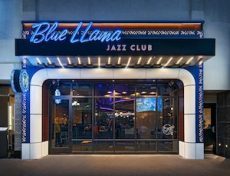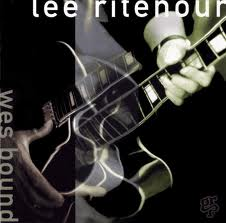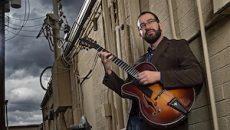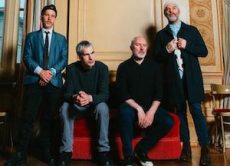
The Jazz Voyager
Leaving the cold of the East Coast for the meaner temperatures of the Midwest as the Jazz Voyager heads to Ann Arbor, Michigan to check out a new venue I am not familiar with. It’s called the Blue Llama and is located at 314 S Main Street, 48104. It’s going to be a rush to the airport from the ship but fortunately I travel light with one carry~on bag. I have my Uber waiting for me at the port and hopefully I will make the plane on time.
My good friend, vocalist and guitarist Allan Harris will be in residence for two nights in this stylish lounge that offers inventive cuisine, charcuterie (meats) and great jazz. Two sets each night and if you haven’t ever seen him perform, here’s your opportunity to revel in his magic and understand the genius of the man.
So bundle up and come out for dinner and a show while supporting your local watering and dining spot and keeping the community vibrant. Enjoy the celebration of music!
The club’s number is 734-372-3200. If you want to get more information visit notoriousjazz.com/event/allan-harris-band-2.
More Posts: adventure,album,club,festival,genius,guitar,jazz,museum,music,preserving,restaurant,travel,vocal

Daily Dose Of Jazz…
Lee Mack Ritenour was born January 11, 1952 in Los Angeles, California and at the age of eight he started playing guitar. Four years later decided on a career in music and by 16 he was playing on his first recording session with the Mamas & the Papas. He developed a love for jazz, influenced by guitarist Wes Montgomery. A year later he worked with Lena Horne and Tony Bennett, then studied classical guitar at the University of Southern California.
His solo career began with his debut album First Course in 1976 which was a jazz-funk sound of the 1970s. Lee followed with Captain Fingers, The Captain’s Journey, and Feel the Night to close out the decade. The Eighties saw Ritenour adding pop elements to his music, which got him charting so he stayed the course. During this period he added vocals to his music, recruiting such artists as Djavan, Bill Champlin, Eric Tagg, Patti Austin, Ivan Lins, Phil Perry, João Bosco, Kate Markowitz, Maxi Priest, Lisa Fischer and Michael McDonald.
In 1988, his Brazilian influence came to the forefront on Festival, an album featuring his work on nylon-string guitar. He changed direction with his straight-ahead jazz album Stolen Moments which he recorded with saxophonist Ernie Watts, pianist Alan Broadbent, bassist John Patitucci, and drummer Harvey Mason.
Then 1991 had Ritenour and keyboardist Bob James forming the group Fourplay, where he stayed until 1997. He released the career retrospective Overtime in 2005. Smoke n’ Mirrors came out the next year with the debut of his thirteen-year-old son, Wesley, on drums.
Guitarist Lee Ritenour has recorded 34 albums, garnered 16 Grammy nominations, received one Grammy Award and has been a judge for the Independent Music Awards. He continues to explore, record, compose and perform.
More Posts: bandleader,guitar,history,instrumental,jazz,music

JEFF LIBMAN
Jeff Libman Quintet
Jeff Libman-guitar, Michael Kocour-piano, Ben Hedquist-bass, Dom Moio-drums, with Clark Gibson-alto saxophone
Chicago-born jazz guitarist Jeff Libman is a Clinical Assistant Professor of Jazz Studies at Arizona State University. As a jazz guitarist, Libman performs frequently in the Phoenix metropolitan area, sharing the stage with some of Arizona’s finest jazz musicians, including Michael Kocour, Brice Winston, Dom Moio, and Eric Rasmussen. His most recent album, Strange Beauty, released on the Cellar Live label, received extensive radio airplay and reached #26 on the JazzWeek chart.
- Table Seats – : $35
- Tier 2 Table Seats – : $32
- High Top Seats – : $32
- East Row Seats – : $27
- West Row Seats – : $27
More Posts: adventure,album,club,festival,genius,guitar,jazz,museum,music,preserving,restaurant,travel

Daily Dose Of Jazz…
John McLaughlin was born on January 4, 1942 into a family of musicians in Doncaster, West Riding of Yorkshire, England. As a child he took up the guitar at the age of 11, exploring styles from flamenco to the jazz of Tal Farlow, Django Reinhardt and Stéphane Grappelli. Moving to London, England from Yorkshire in the early Sixties, hestarted playing with Alexis Korner and the Marzipan Twisters before moving on to Georgie Fame and the Blue Flames, the Graham Bond Organisation, and Brian Auger.
During this period he often supported himself with session work, which he often found unsatisfying but which enhanced his playing and sight-reading. Also, he gave guitar lessons to Jimmy Page. In 1963, Jack Bruce formed the Graham Bond Quartet with Bond, Ginger Baker and John McLaughlin. They played an eclectic range of music genres, including bebop, blues and rhythm and blues.
By the end of the decade McLaughlin recorded his debut album Extrapolation in London. The album’s post-bop style is quite different from McLaughlin’s later fusion works. He moved to the U.S. in 1969 to join Tony Williams’ group Lifetime. He went on to play on Miles Davis’ albums In a Silent Way, Bitches Brew, Live-Evil, On the Corner, Big Fun and A Tribute to Jack Johnson.
As his reputation as a “first-call” session player grew, he was tapped to record as a sideman with Miroslav Vitous, Larry Coryell, Joe Farrell, Wayne Shorter, Carla Bley, the Rolling Stones, DExter Godon, Santana, Paco de Lucia and others.
The Seventies saw him put together the Mahavisnu Orchestra, delved into Indian classical music, and recorded with Stanley Clarke on his School Days album. Throughout the rest of the century he continued to perform with Mahavisnu, no longer the orchestra, as well as sideman duties on a variety of albums, performances and genres well into the new century.
He has recorded nineteen albums as a leader, six collaborative albums, twelve live albums, and 45 as a sideman. Guitarist John McLaughlin continues to perform and record.
More Posts: bandleader,guitar,history,instrumental,jazz,music

THE BAD PLUS
Reid Anderson – bass
Dave King – drums
Ben Monder – guitar
Chris Speed – tenor saxophone
The Bad Plus are the ultimate originals. A democratic unit with a clear vision and a refusal to conform to convention. For the past two decades they have played with spirit and adventure, made their own rules and done so with a bold sense of creativity and intent. Avoiding easy categorization, The Bad Plus has won critical acclaim and a legion of fans worldwide with their unique sound and flair for live performance.
Now in their 21st year, The Bad Plus continues to push boundaries as founding members Reid Anderson (bass) and Dave King (drums) embark on a new piano-less incarnation of the band with Ben Monder (guitar) and Chris Speed (tenor saxophone) – instigating a new wave of excitement and anticipation within the band that is re-energizing their sound and inspiration. The Bad Plus have constantly searched to bridge genres and techniques while exploring the infinite possibilities of exceptional musicians working in perfect sync.
The Bad Plus released their 15th studio recording and debut self-titled album as a dynamic new quartet via Edition Records on Friday, September 30th. “Evolution is necessary for life and creativity,” say Dave King and Reid Anderson. “We’ve evolved, but we’re still The Bad Plus.”
More Posts: adventure,album,bass,club,drums,festival,genius,guitar,jazz,museum,music,preserving,restaurant,saxophone,travel



